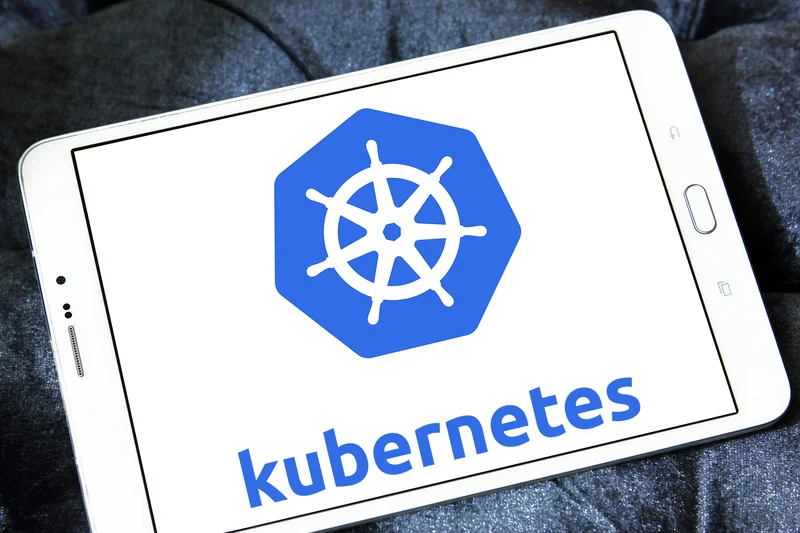Users ought to evaluate container orchestration technologies them in the context of their specific wants, similar to deployment, scalability, learning curve, current techniques, and sort of environment. Container orchestration allows methods to increase and contract as wanted, maintaining effectivity and maximizing processing and memory sources. The modular nature and interoperability of container-based methods requires less time and manpower to build, maintain, and handle advanced methods. When deploying a new container, the orchestration device automatically schedules the deployment to a cluster and finds the right host, considering any defined necessities or restrictions. Container orchestration uses configuration files, often in YAML or JSON format, for every container to instruct the orchestration software on discovering assets, establishing a network, and storing logs.
Introducing Container Orchestration With Kubernetes
Container orchestration is a vital aspect of DevOps that streamlines the deployment, scaling and administration of containerized purposes Data as a Product. As we present in our Kubernetes within the Wild analysis, 63% of organizations are using Kubernetes for auxiliary infrastructure-related workloads versus 37% for application-only workloads. This means organizations are more and more utilizing Kubernetes not just for operating purposes, but also as an working system. By distributing container instances across multiple hosts, orchestration instruments bolster utility resilience.

What Are The Current Standards For Container Orchestration?
They’re able to take management of all of your app’s necessities, together with config values, secrets and techniques, and network services. Container orchestration is required to successfully handle the complexity of the container life cycle, usually for a big variety of containers. A single utility deployed throughout a half-dozen containers could be run and managed with out a lot effort or problem. Most purposes in the enterprise, nevertheless, may run throughout more than a thousand containers, making management exponentially more difficult. Few enterprises, if any, have the time and resources to attempt that type of colossal enterprise manually.. Orchestration describes the method of managing a quantity of containers that work together as a half of an software infrastructure.
High Container Orchestration Tools
One of the controllers contacts the scheduler to make sure the right variety of pods is running. If a pod is down, another controller will notice and produce up a model new pod in instances like this. Ultimately, the selection of software depends on your application’s necessities, existing applied sciences, desired management level, and the way you will manage the orchestrator.
The function of Kubernetes is to host your purposes within the form of containers in an automatic style. To enable you to deploy as many instances of your utility as required and ease communication between different companies inside your software. Kubernetes allows load balancing by providing a single DNS name for a batch of containers. So, you don’t have to revamp the functions to use any service discovery mechanism.
Swarm supports load balancing, service discovery, rolling updates, and declarative scaling. When you alter a container’s replica count, the swarm manager will routinely create or take away containers to maintain up the desired state. Swarm additionally mechanically detects worker failures and assigns replacement containers to wholesome hosts. While Spacelift is not precisely a container orchestrator tool, it’ll enhance the administration of your Kubernetes, Helm, Kustomize, or even CrossPlane configurations. This streamlined integration ensures consistency, repeatability, and scalability in container deployments, making it easier to take care of distributed applications.

According to the Cloud Native Computing Foundation’s 2022 Cloud Native Survey, practically 80% of organizations use containers in at least some production environments. A container is a small, self-contained, absolutely useful software program package that can run an utility or service, isolated from different purposes running on the same host. This allows you to manage traffic throughout multiple applications working in numerous areas using one load balancer configuration. Kubernetes uses containers as constructing blocks for building purposes by grouping them into logical units known as pods (or “chunks”). A pod consists of a number of containers and can be created from scratch utilizing the docker construct command line device or pull photographs from repositories like GitHub/Gitlab etc.
Applications packaged in containers can run uniformly and reliably throughout different computing environments, from on-premises information facilities to public clouds. Vital for digital enterprises experiencing fluctuating demand, orchestrators within the container ecosystem enable companies to scale their purposes without compromising performance. The container ecosystem as a whole refines earlier capacities for scaling and useful resource availability. During development, the container engine facilitates fast prototyping and testing, allowing builders to iterate shortly and effectively.
Service discovery presents a further challenge, as containerized providers should discover each other and talk with one another securely and reliably. Finally, multi-container functions require application-level awareness of the well being standing of each part container in order that failed containers may be restarted or eliminated as wanted. To make health status info out there about all software components, an overarching, cluster-aware orchestrator is required. Tools to manage, scale, and keep containerized purposes are calledorchestrators. Kubernetes eliminates most of the guide processes involved in deploying and scaling containerized functions. You can cluster collectively groups of hosts, both bodily or digital machines, running Linux containers, and Kubernetes provides you the platform to simply and effectively manage these clusters.
- By leveraging container orchestration, DevOps teams can streamline provisioning, resource allocation, and scaling, enabling them to fully harness the potential of containerization and align it with their enterprise goals.
- The race was on to determine which platform would turn out to be the industry normal for managing containers.
- As containers turn out to be popular in software program improvement, guaranteeing their security is the very best priority.
- Network policies in platforms like Kubernetes allow directors to outline guidelines that govern how pods can communicate with each other and with other network endpoints.
- Container orchestration may be programmed to build distributed systems that adhere to the principles of immutable infrastructure, making a system that may’t be altered by further consumer modifications.
This is as a outcome of containers have been seen to supply the proper host for small impartial elements like microservices. Containers are lightweight, standalone packages that contain every little thing wanted to run software program, together with the code, runtime, system instruments, system libraries, and settings. They’ve turn into well-liked for deploying applications as a result of they can be simply packed, shipped, and run throughout different computing environments.
First, developers utilize declarative programming through a configuration file to specify the desired end result (e.g., what containers to run and the way they should be connected) rather than outlining every step involved. Within the file are particulars like container image locations, networking, safety measures, and useful resource requirements. This config file then serves as a blueprint for the orchestration tool, which automates the process of attaining the desired state. Container orchestration addresses these challenges by automating and streamlining the deployment and administration of containers. It supplies a centralized and scalable resolution to efficiently coordinate containerized workloads, giving software program developers and their DevOps counterparts a sooner and more agile approach to automating much of their work.
Kubernetes, developed by Google, is the main open source container orchestration platform. According to the newest surveys, 61% of organizations worldwide have adopted Kubernetes for managing, scaling, and automating laptop application deployment. Once you provide the config file, the orchestration software mechanically schedules container deployment.
Containerization supplies an opportunity to maneuver and scale applications toclouds and information centers. Containers successfully guarantee that these purposes run thesame means anyplace, allowing you to shortly and easily reap the benefits of allthese environments. Container orchestration mechanically provisions, deploys, scales and manages the lifecycle of containerized applications. Developers use container orchestration to streamline agile or DevOps workflows, providing the pliability and velocity needed to support trendy hybrid multicloud infrastructure. Gcore Container as a Service (CaaS) is a serverless cloud solution that lets you run containerized functions within the cloud without managing digital machines or complex orchestrating solutions like OpenShift.
Alternatively, they could opt to deploy their workloads on a managed resolution and, in so doing, end up with high operating expenses or vendor lock-in. First launched by HashiCorp in 2015, Nomad was initially designed to be a common orchestrator. Now, Nomad is a container orchestration device that provides flexible cluster administration and the scheduling and deploying of duties among the many employee nodes in a cluster.
Transform Your Business With AI Software Development Solutions https://www.globalcloudteam.com/ — be successful, be the first!